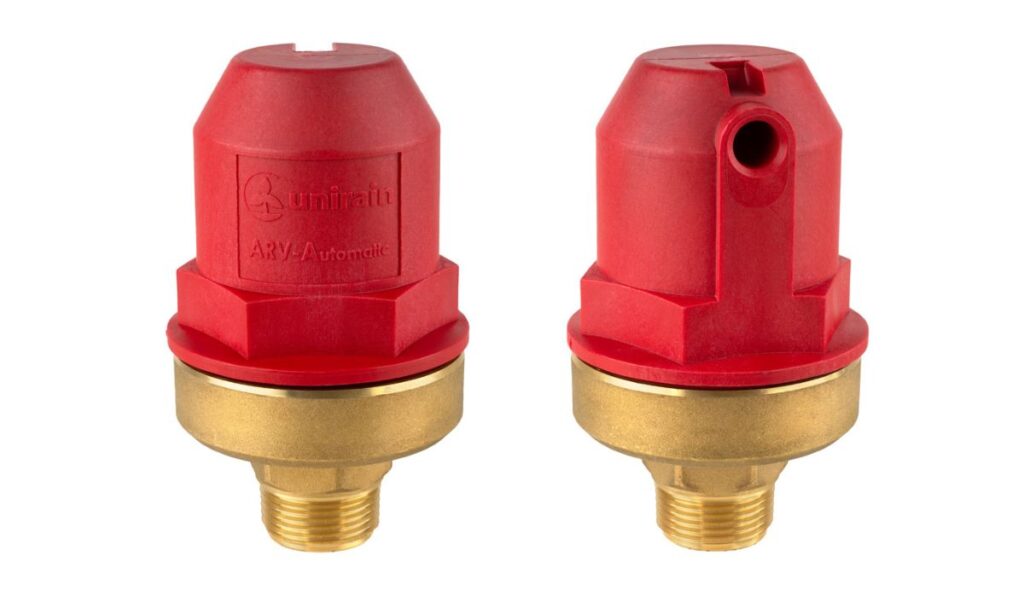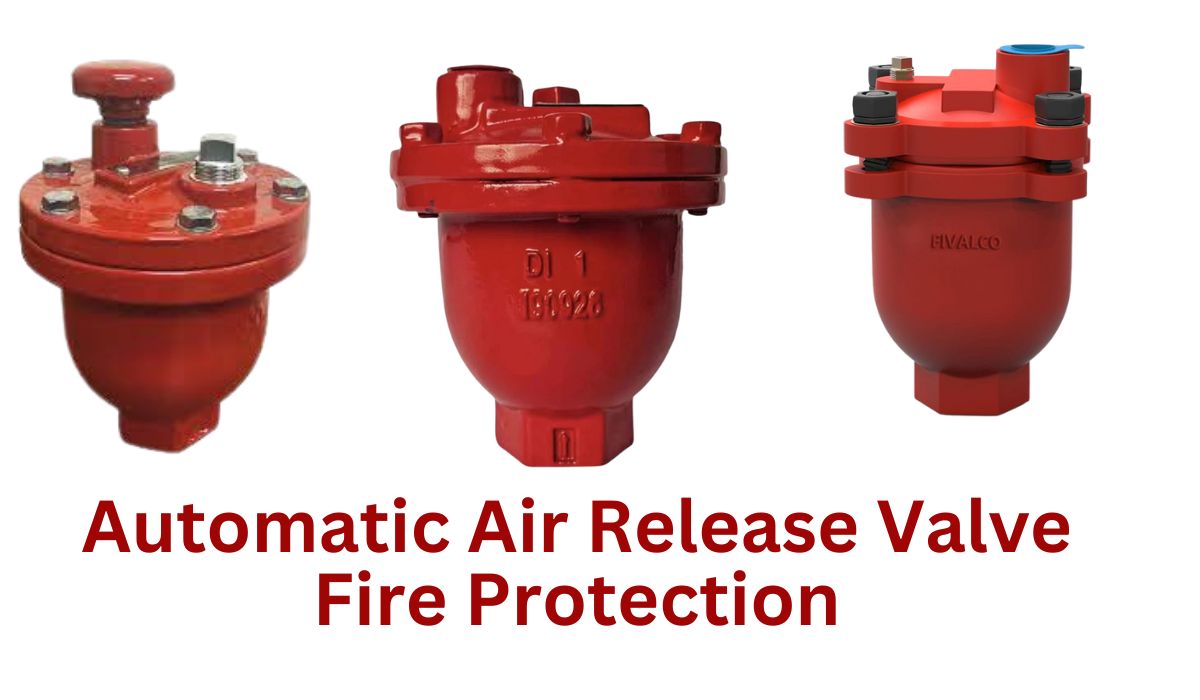An Automatic Air Release Valve is crucial in fire protection systems to remove trapped air. It ensures optimal performance and safety.

Automatic air release valves are essential components in fire protection systems. They work by automatically expelling trapped air, which can impede water flow and pressure. This ensures that the fire suppression system operates efficiently and reliably. Trapped air in the pipes can cause water hammer, reduce the system’s effectiveness, and increase the risk of damage.
Installing automatic air release valves maintains consistent water pressure and enhances the system’s response time during emergencies. These valves are vital for maintaining fire protection systems’ overall integrity and reliability, ultimately safeguarding lives and property.
Introduction To Automatic Air Release Valves
Automatic Air Release Valves are crucial in fire protection systems. They ensure that air pockets do not compromise the system’s efficiency. This introductory section will cover their importance and basic working principles.
Importance In Fire Protection
Automatic Air Release Valves play a vital role in fire protection. Air pockets can hinder the flow of water. This can lead to delayed fire suppression. These valves help remove these air pockets.
Effective fire suppression requires a steady water flow. Air pockets can disrupt this flow. This can result in slower response times. Automatic Air Release Valves ensure the system works correctly.
Fire protection systems must be reliable. Air pockets reduce reliability. Automatic Air Release Valves enhance system reliability. This makes fire protection systems more dependable.
Basic Working Principle
The basic principle is straightforward. The valve automatically releases trapped air. This keeps the fire protection system free from air pockets.
The valve has a float mechanism. When air enters, the float drops. This opens the valve and releases the air.
Once the air is released, the float rises again. This closes the valve. The system is then ready to operate efficiently.
| Component | Function |
|---|---|
| Valve Body | Houses the internal components |
| Float Mechanism | Detects and releases air |
| Release Outlet | Allows air to escape |
In summary, Automatic Air Release Valves are essential. They ensure fire protection systems are effective. This makes them a key component in fire safety.
Types Of Automatic Air Release Valves
Automatic air release valves play a crucial role in fire protection systems. They help maintain proper pressure by releasing trapped air. Understanding the types of automatic air release valves can improve system efficiency.
Single Orifice Valves
Single orifice valves are simple and effective. They have one opening for air release. These valves are ideal for systems with low to moderate air volume. Their design ensures quick air release, reducing the risk of air pockets. Here are some key features:
- Single opening for air discharge
- Compact and easy to install
- Suitable for low to moderate air volume
Double Orifice Valves
Double orifice valves offer greater efficiency. They have two openings for air release. One opening handles large air pockets, and the other handles small ones. This dual functionality ensures a smooth operation. Here are the main advantages:
- Two openings for efficient air release
- Handles both large and small air pockets
- Improves system reliability and performance
| Feature | Single Orifice Valves | Double Orifice Valves |
|---|---|---|
| Number of Openings | 1 | 2 |
| Air Volume Handling | Low to Moderate | Both Large and Small |
| Installation | Easy | Moderate |
Choosing the right automatic air release valve depends on your system’s needs. Single orifice valves are best for simpler systems. Double orifice valves are ideal for more complex systems.
Installation Best Practices
Installing an Automatic Air Release Valve for fire protection systems is crucial. Proper installation ensures reliability and efficiency. This guide covers the best practices to follow. It helps you avoid common pitfalls during installation.
Ideal Locations
Choose the best locations for your air release valve. Install the valve at the highest points of the system. This helps in releasing trapped air efficiently. Place it near the bends and slopes. This ensures air does not accumulate in these areas.
Install the valve in inaccessible locations. This makes maintenance and inspection easier. Avoid installing in hard-to-reach places. Proper placement ensures the valve works effectively.
Common Mistakes To Avoid
Avoid these mistakes to ensure a successful installation. Do not install the valve upside down. This prevents it from working properly. Ensure the valve is upright for optimal performance.
- Do not place the valve near contaminants. Keep it away from dust and debris.
- Avoid using the wrong size of valve. Ensure the valve matches the pipe diameter.
- Do not skip regular maintenance. Check the valve periodically for any issues.
| Mistake | Consequence |
|---|---|
| Wrong Orientation | Poor Performance |
| Incorrect Placement | Ineffective Air Release |
| Skipping Maintenance | Valve Failure |
Maintenance And Inspection Tips
Proper maintenance of automatic air release valves is crucial. It ensures fire protection systems work well. Regular checks help find problems early. This section covers key tips.
Routine Checks
Routine checks are essential for air-release valves. Inspect valves monthly. Check for dirt and debris. Ensure the valve operates smoothly. Clean the valve if needed. Use a soft brush to remove dirt. Lubricate moving parts to prevent rust. Record inspection results in a logbook. This helps track maintenance history.
| Task | Frequency |
|---|---|
| Inspect for dirt and debris | Monthly |
| Check valve operation | Monthly |
| Clean valve | As needed |
| Lubricate moving parts | As needed |
Signs Of Wear And Tear
Look for signs of wear and tear. These signs indicate potential problems. Common signs include:
- Rust on metal parts
- Leaking water
- Unusual noises
- Slow valve operation
Replace worn-out parts immediately. This ensures the valve works properly. Regular checks prevent bigger problems. Keep the system ready for emergencies.
Safety Features And Enhancements
Automatic air release valve fire protection systems are crucial. They ensure safety in fire scenarios. These valves have various safety features and enhancements. Below, we explore some key features.
Pressure Relief Mechanisms
One critical feature is the pressure relief mechanism. This mechanism helps to prevent excessive pressure build-up. Excessive pressure can be hazardous. The valve automatically releases air to maintain safe pressure levels.
The table below outlines key aspects of pressure relief mechanisms:
| Feature | Description |
|---|---|
| Automatic Air Release | Releases air to prevent pressure build-up. |
| Pressure Monitoring | Keeps track of pressure levels constantly. |
| Safety Thresholds | Ensures pressure stays within safe limits. |
Automatic Shutoff Functions
The automatic shutoff function is another essential feature. It shuts off the valve during dangerous conditions. This prevents further escalation of the issue.
- Detection Sensors: These sensors detect unsafe conditions quickly.
- Immediate Response: The valve reacts instantly to shut off the system.
- Prevents Damage: Stops potential damage from spreading further.
Both features work together to enhance safety. They ensure the system operates efficiently and securely.
Common Issues And Troubleshooting
Automatic air release valves are crucial for fire protection systems. They help in removing trapped air. Sometimes, these valves face issues. Here, we discuss common problems and their solutions.
Air Lock Problems
Air lock problems can disrupt the entire system. An airlock occurs when air is trapped. This can block water flow. To fix it, ensure the valve is functioning. Check for any debris. Clean the valve if needed. Regular maintenance helps prevent air locks.
Leakage Solutions
Leakage in the valve can cause significant issues. Leaks may result from worn-out seals. Inspect the seals regularly. Replace damaged seals immediately.
Here is a simple table showing leakage causes and solutions:
| Cause | Solution |
|---|---|
| Worn-out seals | Replace seals |
| Debris buildup | Clean the valve |
| Loose fittings | Tighten fittings |
Case Studies And Real-world Examples
Automatic air release valves play a crucial role in fire protection systems. They ensure the safety and efficiency of these systems. Let’s dive into some real-world examples and case studies.
Successful Implementations
Several industries have successfully implemented automatic air release valves. These valves have improved their fire protection systems. Below are a few examples:
| Industry | Implementation | Outcome |
|---|---|---|
| Manufacturing | Installed in high-risk areas | Reduced air pockets by 90% |
| Healthcare | Used in hospital fire systems | Increased system reliability |
| Commercial Buildings | Integrated with existing fire systems | Enhanced operational efficiency |
Lessons Learned
Implementing automatic air release valves has provided valuable lessons. Here are some key takeaways:
- Regular Maintenance: Regular checks ensure valves function correctly.
- Proper Placement: Valves must be strategically placed for optimal performance.
- Training: Staff should be trained to understand the importance of these valves.
These lessons help improve the overall effectiveness of fire protection systems. Ensuring safety and reliability remains the top priority.
Future Trends In Air Release Valve Technology
The future of Automatic Air Release Valve Fire Protection looks promising. New advancements bring better efficiency, safety, and connectivity. These trends aim to make fire protection systems more reliable and smart.
Smart Valves
Smart valves are the next big thing in air release valve technology. They use sensors and advanced algorithms to detect and react to changes. This makes them more efficient and reliable.
Here are some key benefits of smart valves:
- Automatic adjustments based on real-time data
- Reduced maintenance needs
- Improved safety with early warning systems
Smart valves can communicate with control centers. This allows for quick decision-making and action during emergencies.
Integration With Iot
Integration with the Internet of Things (IoT) is another exciting trend. IoT connects devices to the internet, allowing them to communicate and share data.
For air release valves, IoT offers:
- Remote monitoring and control
- Real-time data analytics
- Predictive maintenance
The table below shows some advantages of IoT integration:
| Feature | Advantage |
|---|---|
| Remote Monitoring | Access valve status from anywhere |
| Data Analytics | Identify trends and issues early |
| Predictive Maintenance | Fix issues before they become problems |
Combining smart valves with IoT makes systems safer and more efficient. It ensures that fire protection systems are always ready to perform at their best.
Conclusion And Safety Reminders
Automatic Air Release Valve Fire Protection systems are vital for safety. These systems help prevent fires by releasing trapped air. Always ensure these valves work properly to avoid hazards.
Summary Of Key Points
- Automatic air release valves reduce the risk of fire.
- They release trapped air in pipelines.
- Proper maintenance ensures system efficiency.
- Regular inspections prevent malfunctions.
- Understanding valve operation is critical for safety.
Essential Safety Tips
Follow these tips to ensure your air release valve is safe:
- Inspect valves regularly for any damage or leaks.
- Keep the valves clean and free of debris.
- Ensure the valves are properly installed.
- Train staff on the correct operation of the valves.
- Use high-quality valves to ensure reliability.
Maintaining your automatic air release valve is crucial. Following these tips helps prevent fire hazards. Always prioritize safety in your fire protection systems.
Frequently Asked Questions
What Is An Automatic Air Release Valve?
An automatic air release valve removes trapped air in piping systems. This helps maintain efficient operation and prevents potential damage.
How Does An Air Release Valve Work?
The valve automatically expels air when it accumulates in the system. It opens to release air and closes to prevent water leakage.
Why Is Fire Protection Important For Air Release Valves?
Fire protection prevents the valve from malfunctioning during a fire. It ensures the valve operates correctly, safeguarding the entire system.
Where Are Automatic Air Release Valves Used?
They are commonly used in water distribution and HVAC systems. They help maintain system efficiency and longevity.
Conclusion
Automatic air release valve fire protection is essential for safety. It prevents dangerous air buildup in systems. Investing in reliable valves ensures optimal performance and peace of mind. Regular maintenance and quality components can enhance fire protection. Prioritize safety and efficiency to safeguard your property and lives.

I’m Abdus Sobur, a highly skilled and professional Fire Safety Officer with a passion for safeguarding lives and property. Over the course of my career, I’ve conducted numerous successful fire safety audits, earning a reputation for excellence in ensuring public safety.
In addition to my role as a Fire Safety Officer, I’m also dedicated to raising awareness about the importance of fire safety. Through my blog, I share insights into the functions of different fire safety equipment, aiming to empower individuals with the knowledge they need to protect themselves and their communities.
I’m driven by a deep commitment to promoting fire safety awareness and preventing fire-related incidents.

